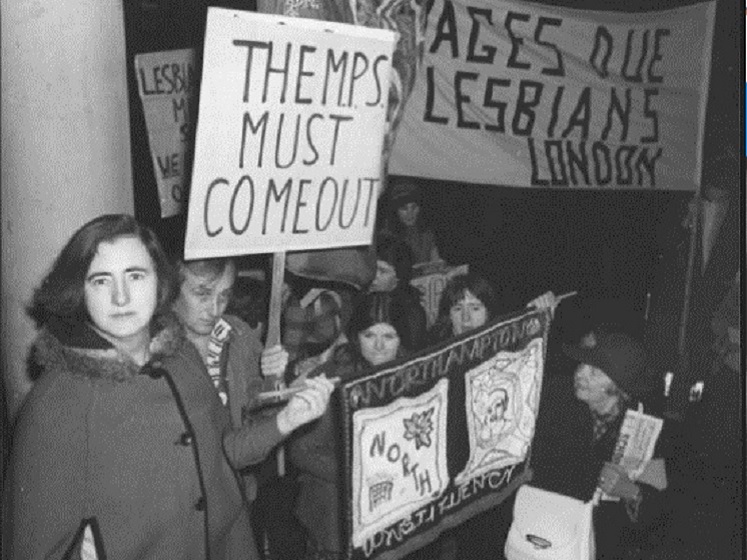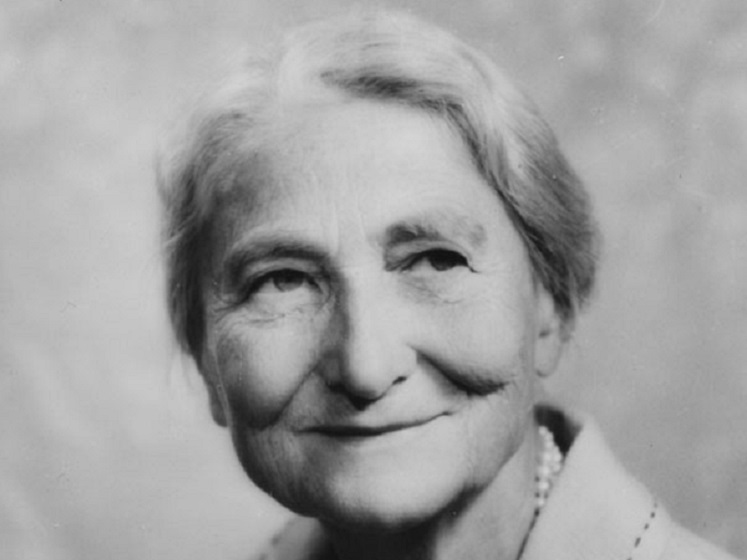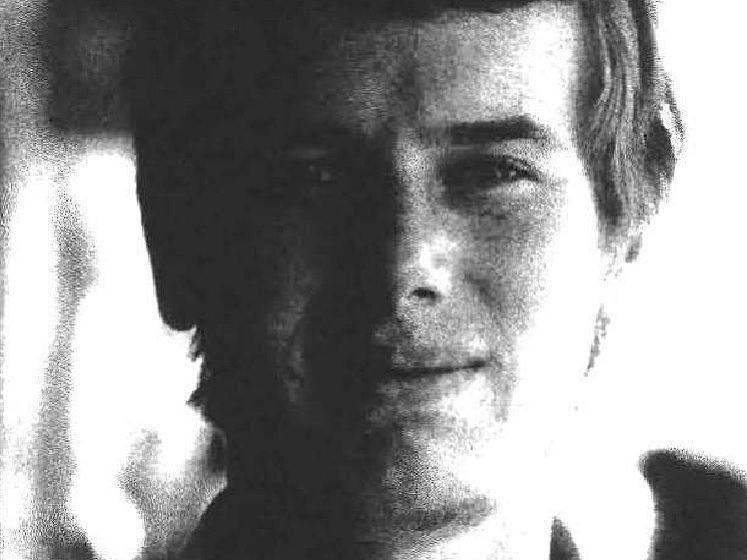From the first openly gay MP to the founder of the Gay Liberation Front in the UK, meet seven LGBTQ+ figures from LSE's history.
Maureen Colquhoun
 Maureen Colquhoun protesting with Gay Defence Committee, December 1977. Getty Images
Maureen Colquhoun protesting with Gay Defence Committee, December 1977. Getty Images
Maureen Colquhoun (1928-2021) was the first openly gay woman to serve in Parliament. Maureen had studied at LSE in the 1940s and was awarded a degree in Economics.
Maureen was elected to the House of Commons in February 1974, and was not afraid to speak out on women’s rights. During a Common’s debate in March 1975, Maureen brought to the attention of the House that remarkably, after over an hour of debate, not a single woman had been called to speak on the Sex Equalities Bill. Maureen’s parliamentary work drew the support of many outside Westminster, including that of Barbara Todd, then publisher of lesbian magazine Sappho.
Maureen came out to her husband and children and went to live with Barbara. She was then deselected as a candidate for the next General Election. Maureen won an appeal in January 1978, but lost her seat in the 1979 General Election.
Veronica Wedgwood
Despite never holding an academic post Dame Cicely Veronica Wedgwood (1910-1997) was a well known and respected historian and public intellectual. The King’s War and The King’s Peace, published in the 1950s, were widely read by the general public introducing many to the history of the English Civil War. Her partner of 70 years was Jacqueline Hope-Wallace.
Goldsworthy Lowes Dickinson
Classicist Goldsworthy Lowes Dickinson (1862-1932) taught several courses at LSE in its very early days, joining the permanent staff as a lecturer in political science between 1911 and 1920. Dickinson was greatly affected by the First World War. He was perhaps the first person to coin the term League of Nations, and in 1915 he and colleagues formed the first ever League of Nations Society. His books The European Anarchy (1916) and The International Anarchy 1904-1914 (1926) were hugely influential on the study of international relations. LSE co-founder Beatrice Webb described him as a “rare spirit”.
Eileen Younghusband
 Dame Eileen Younghusband, c1970s. IMAGELIBRARY/756. LSE
Dame Eileen Younghusband, c1970s. IMAGELIBRARY/756. LSE
Despite gaining international recognition for her pioneering social work education, Eileen Younghusband (1902-1981) was never made a senior member of staff at LSE.
In the late 1920s Eileen Younghusband studied at LSE for the Social Science Certificate and then the Diploma in Sociology, becoming a tutor on the course. During the Second World War, Eileen made a name for herself in social and welfare work.
In 1945, at the same time she returned to teach at LSE, the UK Carnegie Trust commissioned her to undertake an investigation into social work training. Her reports recommended the establishment of a generic training course in social work and the Carnegie Trustees funded a pilot project to run at LSE from 1954. She later joined the Central Training Council in Child Care, taking on the chairmanship of the working group which eventually produced the Younghusband Report on the future of social work.
Eileen was part of a trans-Atlantic network of women working in this field. Her probable partner Martha Branscombe was driving the car that crashed and killed Eileen Younghusband in 1981.
William Stringfellow
Christian lawyer and social justice advocate William Stringfellow (1928-1985) arrived at LSE in 1949 as a politically ambitious young man on a Rotary scholarship. While in London, William Stringfellow experienced a radical deepening of his Christian faith in a way that drew him towards the service of those on the margins of society. On returning to America he studied law and established a legal practice in East Harlem where his clients were immigrants, the poor and the socially excluded. It seems likely that Stringfellow’s reappraisal of life goals in London was linked to an emerging awareness of his homosexuality. By the early 1960s Stringfellow was actively involved in legal counsel for gay people.
Margaret Lambert
Historian Margaret Lambert (1906-1995) gained a PhD in international relations at LSE in the 1930s. After the war spent much of her career as an editor-in-chief at the Foreign Office, specialising in contemporary German history. She also collected and wrote about English folk art with her partner, the designer Enid Marx.
Bob Mellors
 Bob Mellors, c1969. LSE\Student File\Mellors
Bob Mellors, c1969. LSE\Student File\Mellors
Bob Mellors (1949-1996) is known for founding the Gay Liberation in the UK in 1970, while studying Sociology at LSE.
During his studies, Bob spent the summer of 1970 in the USA where he became involved in New York Gay Liberation Front (GLF). He began the UK chapter upon his return to campus. Estimates of attendance at the first meeting ranged from nine to nineteen. Finally, in April 1971 the largest space available at LSE could no longer provide standing room. GLF then moved to Middle Earth, a nightclub in Covent Garden. Bob worked on the GLF newspaper Come Together and in 1971 drew up the GLF Manifesto. He combined this with studying for his Sociology degree, graduating in 1972.
These profiles have been adapted from a selection of LGBT History Month posts on the LSE History Blog by Sue Donnelly, James Walters, Professor Michael Cox, Dr Clare Taylor, Louise Armitage and Megan Marsh. Visit each blog post for further information about the people we have profiled.
You can also explore the LGBT collections at LSE Library.